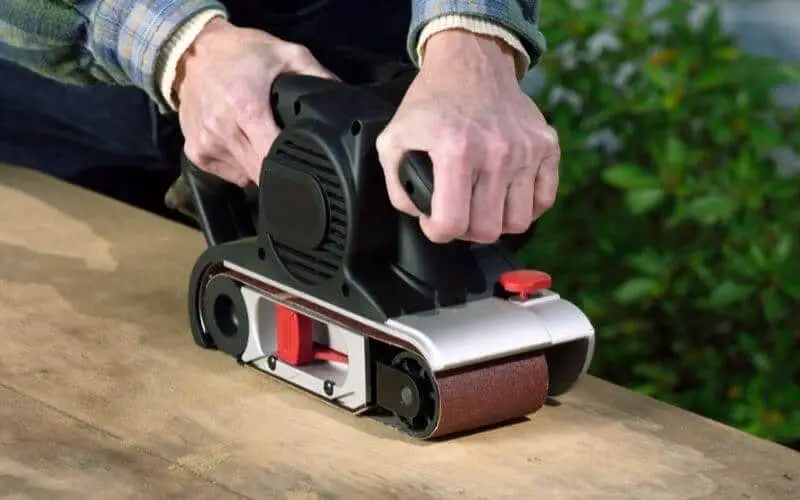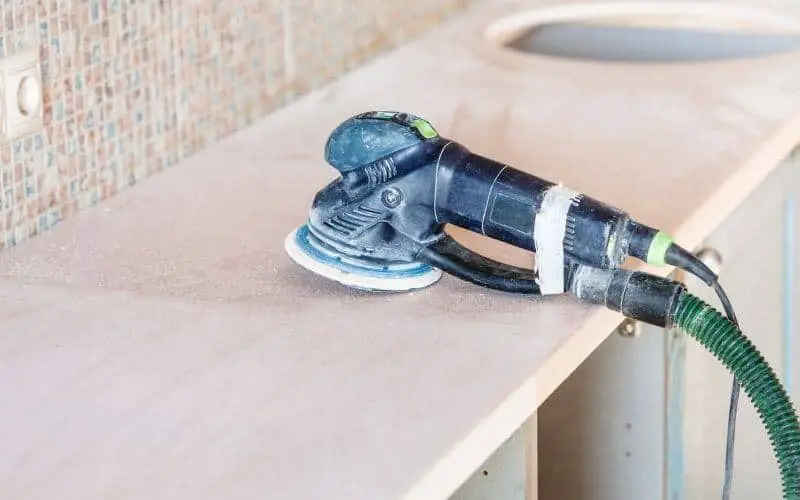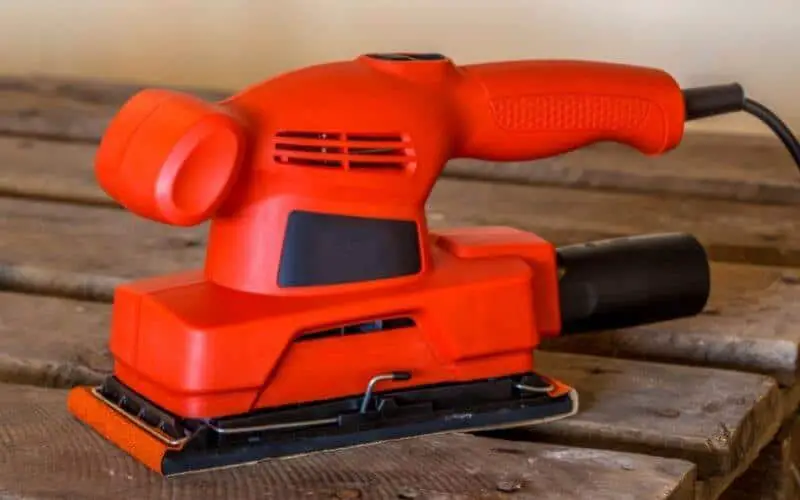To achieve a perfect refinishing job, you need to use the right tools; there are different types of sanders available, using the wrong one can make your sanding job a nightmare.
Wood sanders vary in power, so choosing the one that fits your intended project is very important.
The two commonly used sanders in any woodworking environment are belt sanders and orbital sanders, but belt sander vs orbital sander for floors which is better?
These are two powerful sanders with different capabilities; you need to learn more about their different uses to enable you to find the right tool for the job.
Read: Sanding floor with hand belt sander
Belt Sander vs Orbital Sander for Floors
Table of Contents
There are a couple of differences between belt sander vs orbital sander for floors; here are the characteristics and capabilities of both tools, so you can make a comparison and choose the best sanding tool for your project.
Orbital Sanders
They utilize sanding discs that orbit in small circles; they are usually square-shaped, making them suitable for dealing with corners and edges. They can also be used on large pieces of furniture, and they can get the work done relatively quickly.
The downside of using orbital sanders, however, is that they can leave swirl marks – so they are best suited for sanding wooden floors or furniture that will be painted later.
Here are the characteristics and capabilities of an orbital sander
Speed
The speed of an orbital sander is measured by ‘orbits per minute,’ and it tells how fast your orbital sander rotates. An orbital sander usually works at around 10,000 orbits per minute.
The larger the surface area you are working on, the faster speed you need, but keep in mind that the faster it goes, the less control you’ll have over the machine, so you may be more likely to make mistakes.
The level of speed produced by an orbital sander depends on the model in use.
Power
Amps are the power measuring unit of an orbital sander. The higher the number, the more powerful the machine is – and the faster it can operate.
An orbital sander, however, may not be powerful enough to remove a lot of material, so if you need to sand off a lot of wood, you might need a more powerful tool.
Handles
An orbital sander is usually equipped with a few sander types of handles, including:
- Pistol-grip handles: These allow you to get good control over the machine as it allows you to use both hands, one to direct the machine and the other to apply pressure. Pistol-grip handles are normally found on professional-level orbital sanders.
- Jug-grip handles: These are best suited for reaching corners and areas that are difficult to navigate, like underneath a piece of furniture or wood to sand it.
- Palm grip handles: These are the most common type of sander handles, and they usually have a comfortable grip.
Sandpaper
The larger the sandpaper attached to your orbital sander, the bigger the surface area you can cover with one pass. The most common size of an orbital sander is known as a ‘quarter-sheet sander’ because it has the size of a quarter of a sheet of sandpaper.
You can use a peel-and-stick system or velcro to attach sandpaper to an orbital sander. You can purchase any type of sandpaper to use with an orbital sander, and the sandpapers are quite affordable, making them a great option if you’re on a budget.
Dust collection
Sanding generates a lot of dust regardless of the type of sander you use, and it is harmful to breathe it in. However, an orbital sander is usually equipped with some kind of dust collection system.
This passive dust collector usually consists of a dust collection bag, and it collects the generated dust as you work.
An orbital sander also has filters and sealed switches, and it prevents dust from entering the mechanism of the tool, which can damage it.
Belt sander
A belt sander looks different compared to an orbital sander, and they consist of an electric motor, which rotates a pair of drums, to which a loop of sandpaper is attached.
Belt sanders are a bit bigger than orbital sanders and are also powerful. They are capable of removing a lot of material quickly and is best suited for large surface areas.
Belt sanders are best for the beginning stage of the sanding process when you are shaping and finishing a wood floor and need to work quickly. They are best at creating a completely smooth finish surface.
Speed
The speed of a belt sander is measured in feet per minute. The higher the number, the faster the sander can spin. To switch up speed for different tasks, you can use a variable speed belt sander.
Power
Belt sanders are very powerful, and their power is measured in amps. A good belt sanders usually have around 8-11 amp motor. The more powerful the sander is, the tougher the wood the machine can work with, and the faster it can rotate.
However, you need to be careful when operating a belt sander, as they have a high amount of torque which is the force used to turn the belt.
Sandpaper
Belt sanders, unlike orbital sanders, uses a loop of sandpaper. The most common size is a 3-in. Wide sanding belt, and they are the most versatile. The smaller the loop of sandpaper, the smaller and lighter the tool will be, which makes them great for smaller tasks.
However, the larger the sandpaper loop, the larger the surface area you can cover with one pass, so this is great if you have large pieces of wood to work with.
Belts can be made from aluminium oxide or zirconia; these are sharper and tougher and more long-lasting. However, they may be more expensive than traditional sandpaper, so you might want to consider that.
You can switch up the grit according to the intended use of your belt sander. To remove layers of material or varnish or stains quickly, it is best to use a coarse grit.
Related: How to fix uneven stain on wood floors
Dust collection
Sanding creates a lot of dust, but like orbital sanders, some belt sanders come with a dust collection bag, which helps collects the dust into one place. Some belt sanders are also equipped with a vacuum system, which sucks up the dust generated as you work.
Read: Sanding hardwood floors with palm sander
Conclusion
Belt sander vs orbital sander for floors which is better? This is a comparison that will help you choose the right tool for your sanding project.
Orbital sander and belt sander are both great sanding tools, but they have different characteristics and capabilities, which makes them suitable for various tasks.


